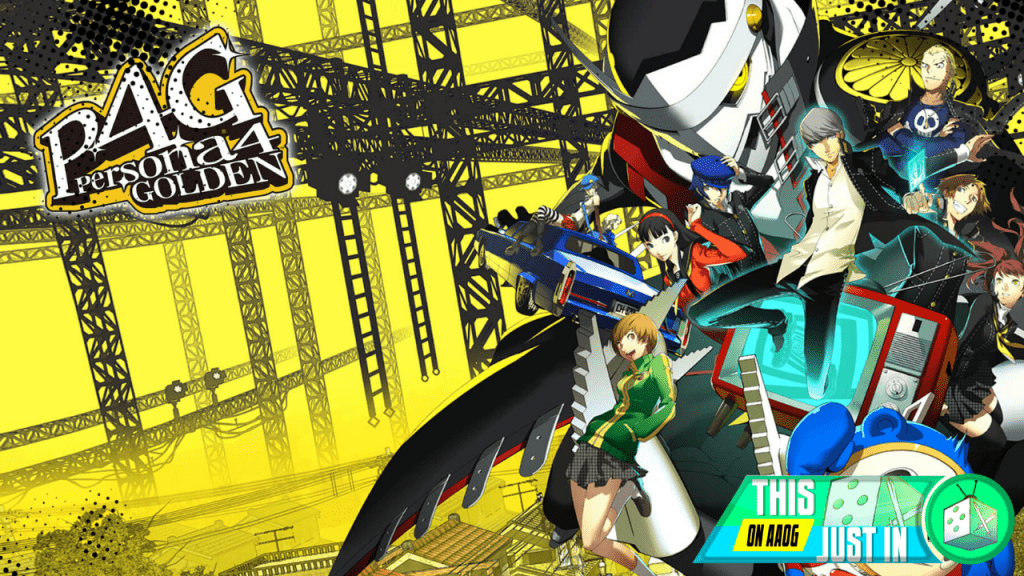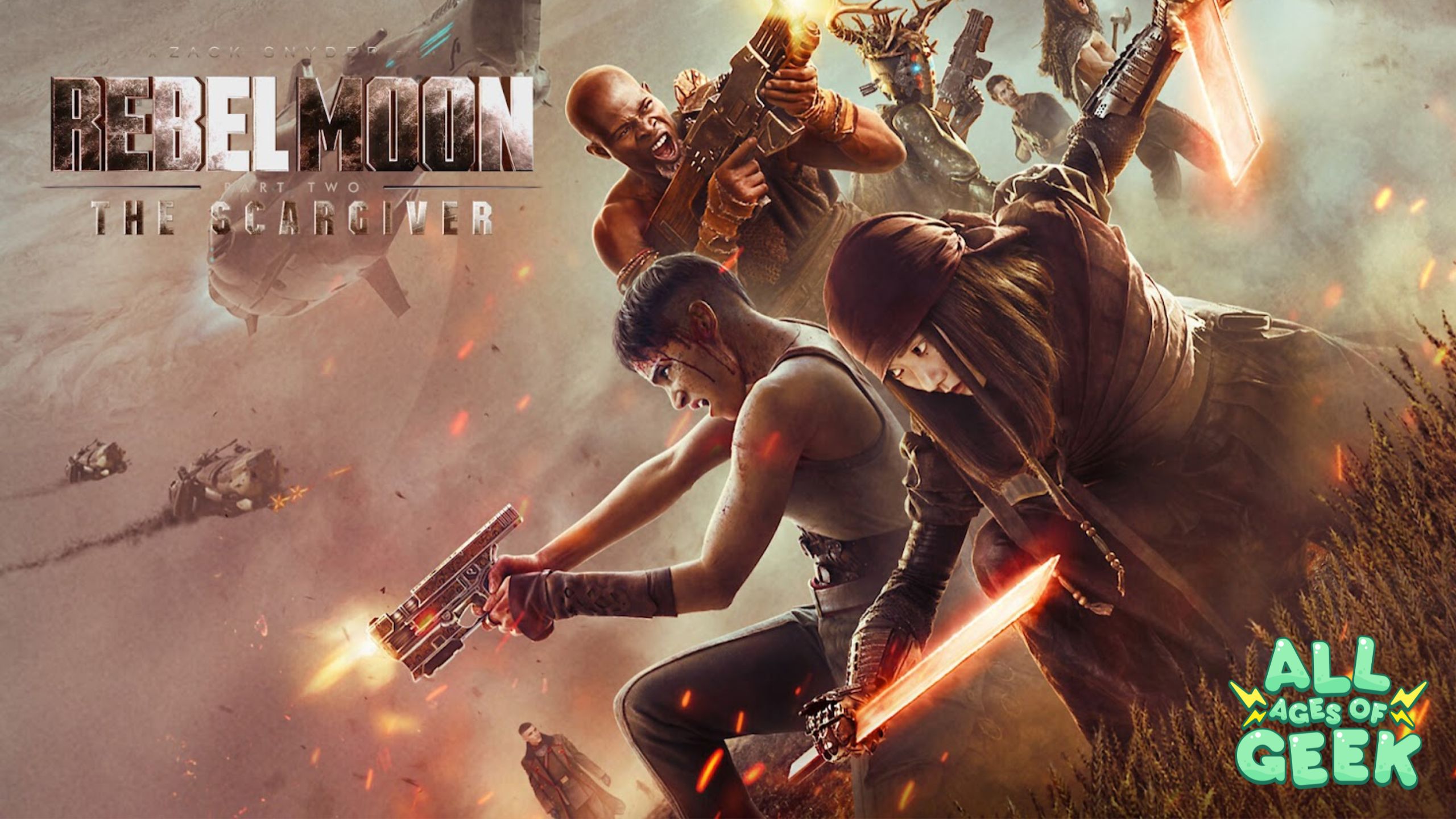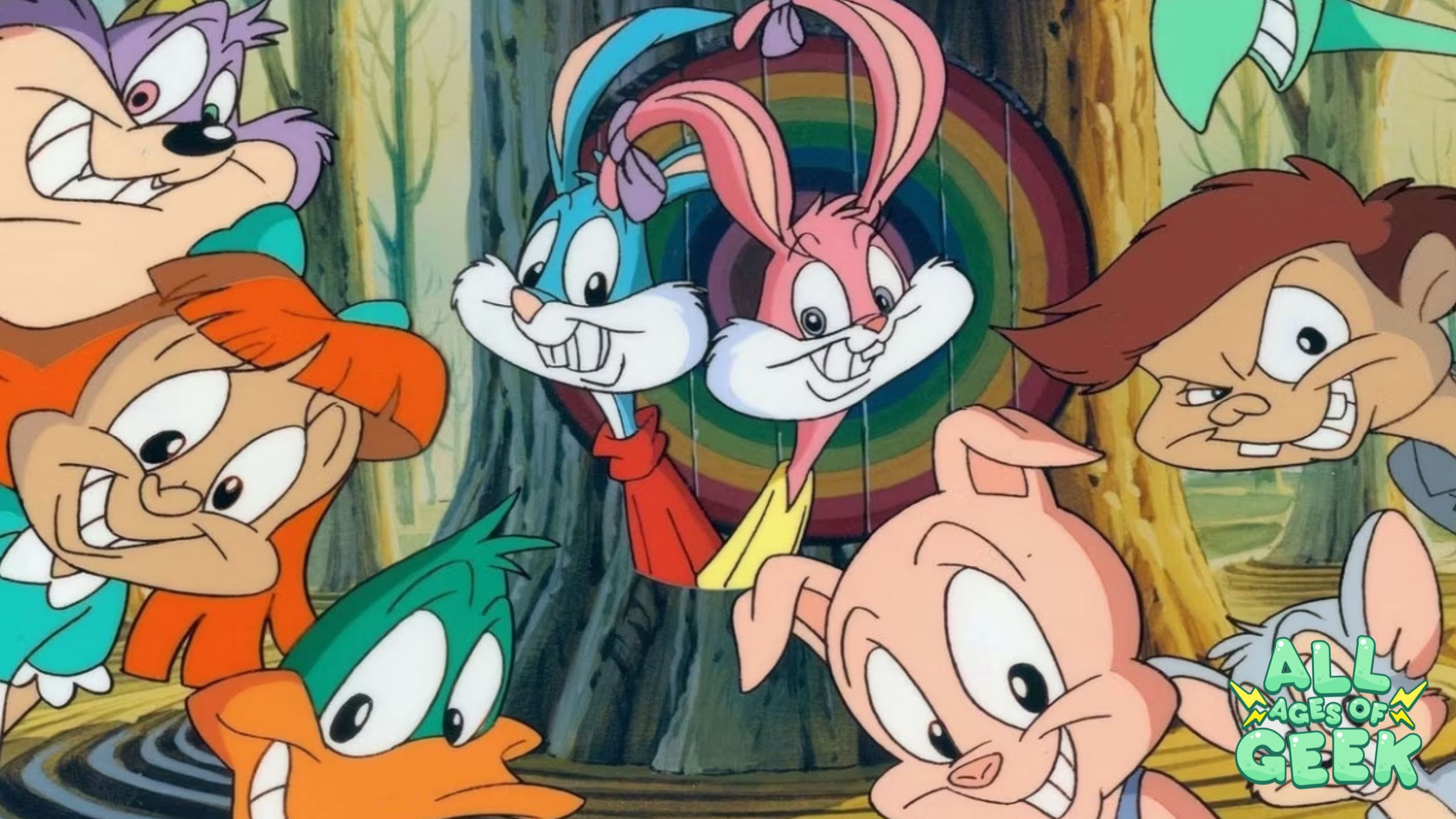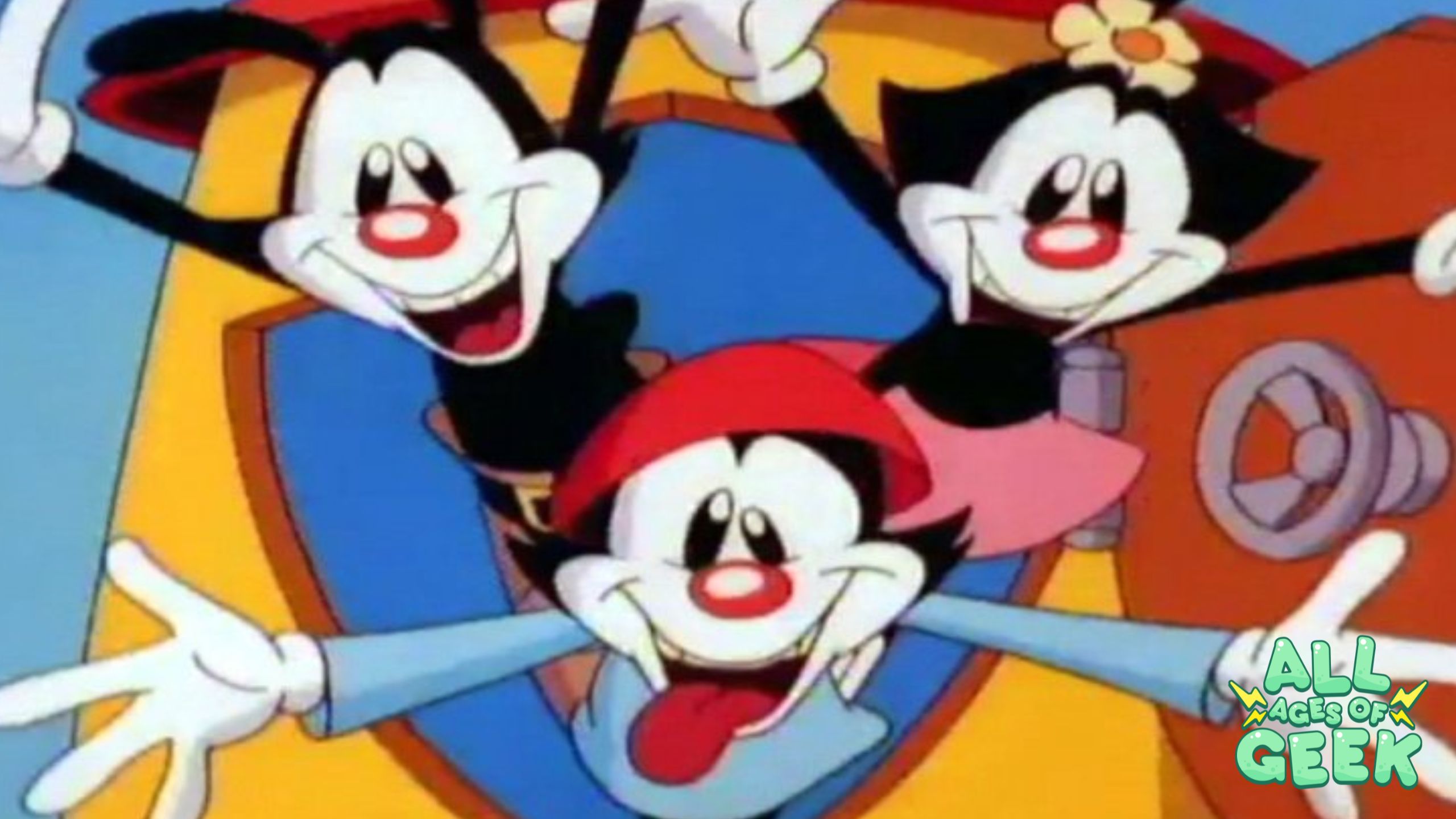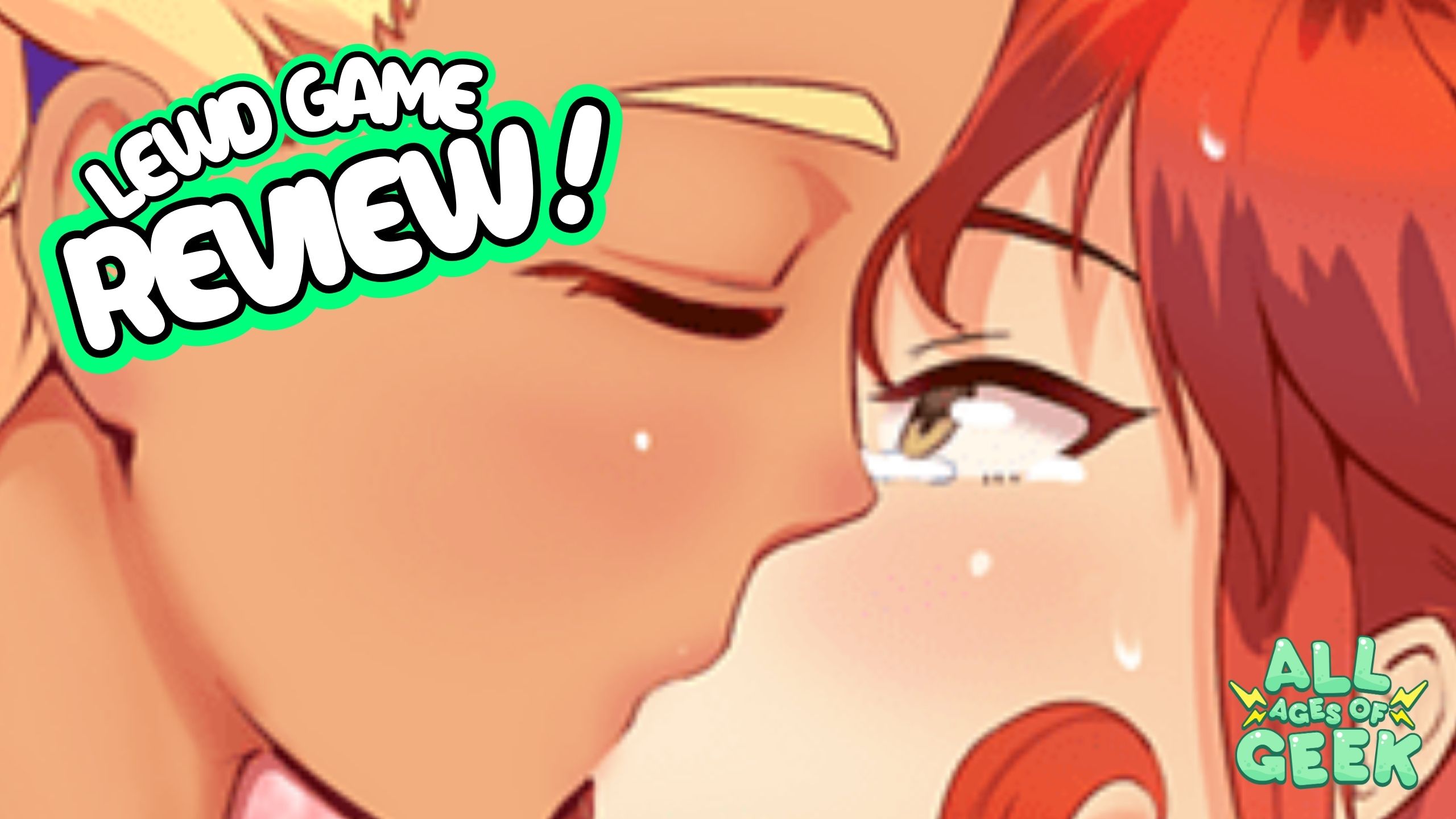Welcome everyone to a review that I have been looking forward to writing for a while. That’s right folks, it’s time to talk about Person 4 Golden! Despite never playing it (until now), I had heard nothing but good things about it from everyone I knew that played it. However, when it was announced that this beautiful game was going to be released on Steam (a free service on the computer that allows people to buy digital copies of games) on June 13th. Let’s just say that I was ecstatic to hear the news since this was a game that I’ve wanted to play for a long time. I also loved the affordability of this beautiful game. I mean, $20 for the main game and $25 for the Deluxe Edition (which comes with the digital artbook and soundtrack), it can’t get any better than that. Now that I’ve finally experienced one playthrough of the game, I can share my honest thoughts about this game that is beloved by many. So summon your personas and strengthen those social links, here is my spoiler-free review on Persona 4 Golden.
Story and Characters
If I could describe the story of Persona 4 Golden, I would say that it’s not too complex and yet not a boringly simple story. The game’s story follows Yu Narukami, who moves in from the big city to live with his uncle and younger cousin in Inaba for a year while his parents are working overseas. During his stay, Yu attends his second year of high school and meets a wide variety of fun and colorful characters. Now for those that aren’t familiar with this game, you’re probably asking “Tracy, how is the daily life of a highschooler a beloved game?.” Well, I’m glad you asked because there is a big mystery that you’re trying to solve with your friends. What kind of mystery? Why murder of course. That’s right, you’re playing the game as a group of high school students that are trying to solve a series of murders and kidnappings occurring in their small town.
If you thought that it couldn’t get any crazier, think again. While you do spend a good amount of time at school and exploring the town, you and your group will spend the vast majority of the game in another world, which can only be accessed by entering a tv. That’s right, you can spend maybe 75 percent of the game inside of a tv. Well, you’re not exactly inside of a tv, it’s more like you’re transported into another dimension, the tv is more like a gateway. Long story short, there are murders occurring in Inaba and you and your friends are trying to solve the mystery and prevent any further victims by exploring this other dimension via the tv. There are also a number of side stories, which will be briefly covered in the Visuals and Gameplay section of the article. Something that I always enjoy analyzing is the use of symbolism throughout the game. Whether it’s the overall theme of the game (acknowledgment) or the “other world” (inside of the tv) of a character that you save, you’re able to examine characters and situations from a different angle. Speaking of the “other world,” when you enter the tv and go to a specific area, that the kidnapping victim is trapped in, you’ll encounter the victim’s shadow or their true self. In these sections, you get a better idea of what that character is like, making these sections very real and relatable. Imagine getting thrown into this “other world” via the tv and the people, who may end up being your friends, see the true part of you that has been kept hidden from others. That’s pretty terrifying, isn’t it? And the only way for that shadow to disappear is to face it and acknowledge that that is you, which is not an easy thing to do. This is something that everyone in your friend group has to go through, which gradually leads to some powerful character development.
Just like with the story, really talking about the main characters is a bit of a challenge. Persona 4 Golden is another one of those games where I can’t go into too much depth without spoiling important information about the characters or even the story. However, I am still able to give a brief description of each character and my thoughts about them.
![Vulgamification [Persona 4 Golden]: What the hell just happened ...](https://i0.wp.com/vulgamer.com/wp-content/uploads/2013/12/Persona-4-Golden-Featured.jpg?fit=1200%2C750&ssl=1)
Picture from vulgamer.com.
Yu Narukami (voiced by Johnny Young Bosch): To start things off, I’ll reintroduce our protagonist: Yu Narukami. While this is his official name, you can choose his name if using the official name isn’t your style. Long story short, Yu is the character that you play as in the game. You choose which bit of dialogue he says, what he’ll do throughout his day (when there isn’t a scripted event going on). He is also the leader of the investigation team that is made up of the friends you make. Long story short, you’re “The Chosen One,” but (in my opinion) it’s written in a way where you can, at a certain point, choose from a few different pathways to walk down. I’ve seen one or two other options online and…it can get pretty dark; I actually had to sit back in my chair and process what I witnessed. But yeah, Yu Narukami is a pretty well-written protagonist character that reflects your actions throughout your game.
Ryotaro Dojima (voiced by Jean Benoit “JB” Balnc): Mainly addressed as Dojima, he is the protagonist’s uncle and is who you live with for the entirety of the game. Dojima is definitely a character that I sympathized with fairly quickly throughout the game. He’s a single parent that struggles with maintaining a strong emotional bond with his daughter, all while working as a detective in the police force. Due to his constant involvement with the investigation of the murders, Dojima is rarely home. Despite his strict, hard-boiled personality and acting like he’s interrogating you, Dojima sincerely cares about you and his daughter. He checks up on you (and Nanako) as often as he can, mainly to make sure that you’re not getting involved with the case (which you obviously are). While he’s not a playable character, you can spend time with him to strengthen your social link with him. While it’s a pretty straightforward social link story, I still enjoy how real it is and how JB Blanc (Dojima’s voice actor) added so much emotion to those moments.
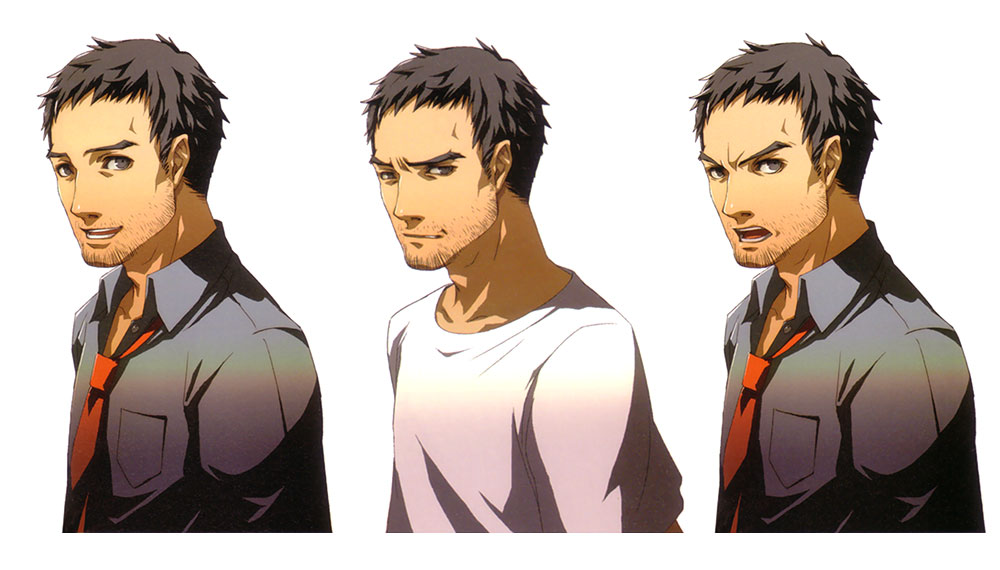
Photo from megamitensei.fandom.com
Nanako Dojima (voiced by Karen Strassman): I don’t know what it is about Nanako, but whoever was in charge of creating her character deserves an award. Nanako is one of the few child characters that had awaken my protective maternal instincts and made them rise to such a high level. The second she appeared on the screen, I knew that I was going to do everything in my power to make her happy, not to mention that I wanted to help strengthen and repair the bond between her and her father. Despite being six or seven, she’s very mature and is very capable of taking care of the house (which is a normal custom in Japan). Every moment that Yu spends with Nanako is very sweet and wholesome, which becomes even more so when she is with Yu and his friends. Yu’s relationship with Nanako strengthens to the point where she’ll call him “Big Brother” as opposed to addressing him as her cousin. Karen Strassman did a fantastic job of making sure that Nanako sounded as close to her age, sweet and innocent without sounding annoying.

Photo from flickr.com
Yosuke Hanamura (voiced by Yuri Lowenthal): He’s also the one that steps forward with the suggestion to investigate these incidents. Like Yu, Yosuke moved to Inaba from the big city with his family (six months prior) due to his father becoming the store manager to the Inaba location of Junes (a Wal-mart like store). Since Junes has, in some way, become a “family business,” Yosuke works part-time there. As a result of Junes being built in Inaba, many of the local businesses ended up going out of business. This makes Yosuke not the most popular person with the shopkeepers from the Central Shopping District. Fortunately, he doesn’t let that get to him, probably because he’s used to it and knows that it’s not his fault. The food court also doubles as the meeting place of the investigation team and the electronics department is where the team enters the “other world.” Partway into the story, you can tell Yosuke is one of the characters that has been hit the hardest with the sudden string of murders and kidnappings. Despite trying to be a ladies’ man and acting before thinking, he’s a good person at heart and cares about the people around him. He’s someone that you know you can depend on. Throughout the story and from his Social Link scenes, he really grows to love this small town that can treat him like crap and comes to terms with certain events that occurred. Honestly, I can’t think of anyone besides Yuri Lowenthal to really bring those emotional and casual moments to life.
Chie Satonaka (voiced by Erin Fitzgerald): A huge tomboy with a love for kung-fu movies, Chie is someone that will be first in line for a meaty dish. As someone with a strong sense of justice, she won’t hesitate to jump into a fight to protect someone. Most of the time you’ll see her with her best friend Yukiko, who have some interesting history with each other. While trying to overcome her own personal issues, Chie does whatever she can to keep things upbeat with the group. She can be short-tempered and tends to butt heads with Yosuke, but despite that, they’re pretty good friends. Both Yu and Yukiko motivate her to get stronger to become stronger, which also leads her to wanting to protect them even more. I know that there are people that aren’t too fond of Erin Fitzgerald’s performance as Chie (there was a change in voices for Golden), but I think she did a fantastic job bringing out the tough, protective, and caring sides of Chie.
Yukiko Amagi (voiced by Amanda Winn Lee): To compliment Chie’s extrovertness, Yukiko is a quiet introvert, but gradually comes out of her shell as the game progresses. She and Chie have been best friends since they were kids. Her family runs the local Amagi Inn, which has been a big part of Inaba for hundreds of years; this earns it the nickname of being the town’s “treasure.” Yukiko spends a lot of her time helping her family out and training to be the next successor to run the inn, all while still going through high school. Out of everyone in the group, Yukiko is the most likely to burst out laughing and the smallest comedic moment. Honestly, I think she has a really beautiful and adorable laugh, which is backed up by Amanda Winn Lee’s portrayal of her.
Kanji Tatsumi (voiced by Troy Baker): The first thing you should know about Kanji is that he’s my favorite character. Sure he may look rough and mean, but when you spend enough time with him you realize that there’s more to him. In my opinion, Kanji has some of the best Social Link scenes due to how much character development he goes through and this journey of coming to terms with himself. Troy Baker really nailed it with making Kanji not only tough and manly, but also comforting and emotional. If Kanji was a real person, he’s someone that I would, without a doubt, want to have as a friend.
Rise Kujikawa (voiced by Laura Bailey): Rise was a character that took some time for me to warm up to, I honestly didn’t care for her when I first met her. She was a little too clingy for my taste. Over time, however, I’ve grown to like her. She moves back to help her family out at the Inaba tofu shop to take a break from being a very popular idol. Gradually, she becomes a very key member of the group and is easier to work with once you work on her Social Link. Despite her childishness and being very confident (most likely as a result of her idol training), Rise is a very sweet and caring person and I genuinely did enjoy Laura Bailey’s performance (I honestly had no idea she played Rise).
Teddie (voiced by Sam Riegel): As the game’s mascot, Teddie is an interesting character. As a resident of the “other world” Teddie serves as a guide for most of the game. While he’s very energetic and can lighten things up (like Chie), he’s also very childish and innocent to how human customs work. This sadly leads to him not having any social boundaries, which tends to get him into trouble. Despite that, Teddie cares for his friends, especially Nanako. Honestly, Teddie is one of the characters on this list that I have trouble talking about without spoiling anything. What I can say is that I love how Sam Riegel brought out the different emotions and the cuteness that Teddie expresses.
Naoto Shirogane (voiced by Anna Graves): Naoto is a fantastically well-written character and one of my favorites. He assists the police, with the investigations, as the fifth generation of the famous Shirogane detectives. Naoto plays a huge role as the detective of the group and helps out in both mental and physical battles. Like Yosuke and Kanji, Naoto has strongly written character development during his Social Links. Naoto is also a huge bookworm, mainly detective novels, which also won me over. Anna Graves was amazing with bringing a masculine, yet graceful performance to Naoto’s character.
Igor (voiced by Daniel Woren): While Persona 4 Golden is my first introduction to this character, I know that he plays a huge role in the Persona series. Despite his appearance, Igor is very calm and collected and apparently is very tall, despite him constantly sitting down. As a resident of the Velvet Room, Igor guides Yu in whatever way he can. He is also the person you turn to if you want to fuse Personas. It was surprising, yet awesome to hear Daniel Woren voice Igor, since he also voiced Byakuya Kuchiki in the widely popular anime series Bleach.
Margaret (voiced by Michelle Ann Dunphy): I don’t really have much to say about Margaret. She talks in a quiet, professional manner and is Igor’s assistant. You can establish a social link with her and apparently she’s scary strong. She is capable of some sass and humor, but other than that, I don’t really have anything to say about her.
Marie (Eden Riegel): Marie spends most of her time in the Velvet Room as Margaret’s assistant. I know that there are people that don’t care for Marie or even the fact that she was added to the game, but I think she’s alright. When you first meet her, she has a very rough exterior and won’t hesitate to voice her opinion, but she is capable of apologizing. After spending time with her and strengthening her Social Links, I feel like she’s at least become a little nicer and has some decent character development. There were some moments where I genuinely felt bad for her and wanted to give her a big hug and Eden Riegel really nailed those intense, emotional moments.

Photo from tapatalk.com
Tohru Adachi (voiced by Johnny Young Bosch): I both love and hate this character, like a “hate to love, love to hate” relationship. As Dojima’s partner, Adachi works as a police detective to help with investigating the murders and kidnappings. Relaxed and cheerful, he mainly serves as comic relief and has a nasty habit of running his mouth letting key details to the case slip. Adachi can be found either working with Dojima or somewhere else, avoiding work. I honestly feel like Adachi is one of Johnny Young Bosch’s best roles.

Photo from megamitensei.fandom.com
Graphics and Gameplay
For a game that is about eight years old, Persona 4 Golden‘s graphics are still fantastic. Sure, this version has HD (high definition) graphics now, but I honestly believe that the game looks amazing either way. Sure, Inaba doesn’t have a lot to look at, but it’s still fun to go for a walk and take in the sights (that are available to see). There’s a mixture of regular in-game graphics and anime-style animated cutscenes, which are both equally enjoyable. The characters move pretty naturally in and out of battle scenarios and it’s really fun to see character models react in a way that matches their dialogue. The craziest part with the town and its design in comparison to the actual town that it’s loosely modeled after. While the similarity isn’t on point, it’s still incredible to see videos where the person filming visits locations that are almost identical to each other.
Before playing Persona 4 Golden, I knew there were a lot of things you can do in the game and there is A LOT that you can do (which I greatly underestimated). There are so many side quests and activities that you can do in this game, some of which lead to making tough decisions. I never thought I’d struggle so much with deciding whether to join the basketball club or the soccer club. You really have to learn to juggle attending club activities, part-time jobs, and main story missions.
Other than the side quests and after school activities (clubs and part-time jobs) you’ll spend most of the game exploring its version of dungeons in the “other world” in order to strengthen your group and everyone’s Personas. Each dungeon has numerous Shadows, in a variety of forms, which are monsters that are made from mainly negative human emotions. The bosses of each dungeon have their own unique designs and can be a challenge to defeat, depending on how prepared you are. I will say that the turn-based combat system is very easy to get the hang of. It’s mainly just observing which enemy is weak to what and making sure that you have the right equipment. These bosses are a much stronger Shadow that represents a person’s true self, which they have to come to terms with and acknowledge it, thus leading to it becoming their Persona.
Long story short, in the world of Persona, a Persona is the physical manifestation of you or a character. From what I hear it varies on the game, but (as far as I know) in Persona 4 and Persona 4 Golden it represents the true self that the character struggled to acknowledge the existence of. Each Persona has its own unique form and has a specific assortment of abilities, which are sorted into a different Arcana (Tarot cards) group. Since you’re the protagonist, you have access to multiple Personas (along with your main Persona) and can fuse them to form stronger ones (the possibilities are endless). Another interesting fact is the design of each main character’s (in your inner circle) Persona is based on/inspired by Japanese gods and goddesses.
Along with fusing Personas, to create stronger ones, the main Personas can also change their form and learn new skills through Social Links. Like the name hints at, Social Links the result of a bond that you form with specific characters in the game. The higher the level, the stronger the bond is and as a result, you can fuse new Personas based on the Arcana group the Social Link represents. When you reach the max level of any Social Link, you are able to fuse Personas to create the Ultimate Persona that represents the specific Arcana. If you do the same with any of your main friends, their Persona changes/evolves to its true form as a further sign of them overcoming their inner battle. Because this was my first time playing Persona 4 Golden, I wasn’t able to experience all of the Social Links and reach their max level. This was a big lesson for me on knowing which character was available on which days, something that I’m keeping in mind for my next playthrough.
Speaking of lessons, when I finished playing the game for the first time, I learned that were so many story-related moments that I missed. I knew that there were multiple endings, but I had no idea that there were special boss battles that played a huge part in the story. This makes me all the more determined to explore this game and uncover those secrets.
The Soundtrack
If any of you have read enough of my review articles, you know that the big part I pay attention to the most is the soundtrack. Persona 4 Golden has, without a doubt, one of my favorite soundtracks in the RPG and JRPG gaming genres. I’ve listened to songs from the “main three” Persona games and what I’ve noticed that most are how the composers took extra care to have each song fit the theme of the game and the different scenarios. Not only do the songs fit so well with different moments and areas of the game, but they’re also super catchy and envoke powerful emotions. Every one in a while, I’ll play Snowflakes and the song still makes me burst into tears because of where and when it plays in the game, not to mention the pure emotion that I could feel from the vocal performance. Music has an indescribable power when performed correctly and at the right time and Persona 4 Golden‘s soundtrack is a fine example of this. Even some remixes of certain songs can still contain a similar amount of power as the original versions.
Conclusion
After playing Person 4 Golden, I can understand why people love this game so much. The characters are well-written, the story is engaging, the gameplay is very solid, and the music is awesome. There are various plot-twists that come at you left and right, which made really going into depth with writing this article a challenge. The PC version of the game was very affordable and despite the lag issues with the animated cutscenes (which was fixed with the recent patch) and some awkward voicing moments, I had an awesome time. As a game with a multiple replay value, I’m giving it a 13/10. If the patch hadn’t been made available before writing this article, I would’ve lowered the score. If you have the chance to, especially with how things are now, this is the perfect game to play. While I’ve played a little over 70 hours, you can end up playing well over 200 hours and enjoy multiple playthroughs finding all those little secrets. Honestly, playing Persona 4 Golden really makes me want to play Persona 5 Royal. If any of you are interested, feel free to let me know in the comments. Until then, this Tracy Preston/CuriousCat-13…signing off.


